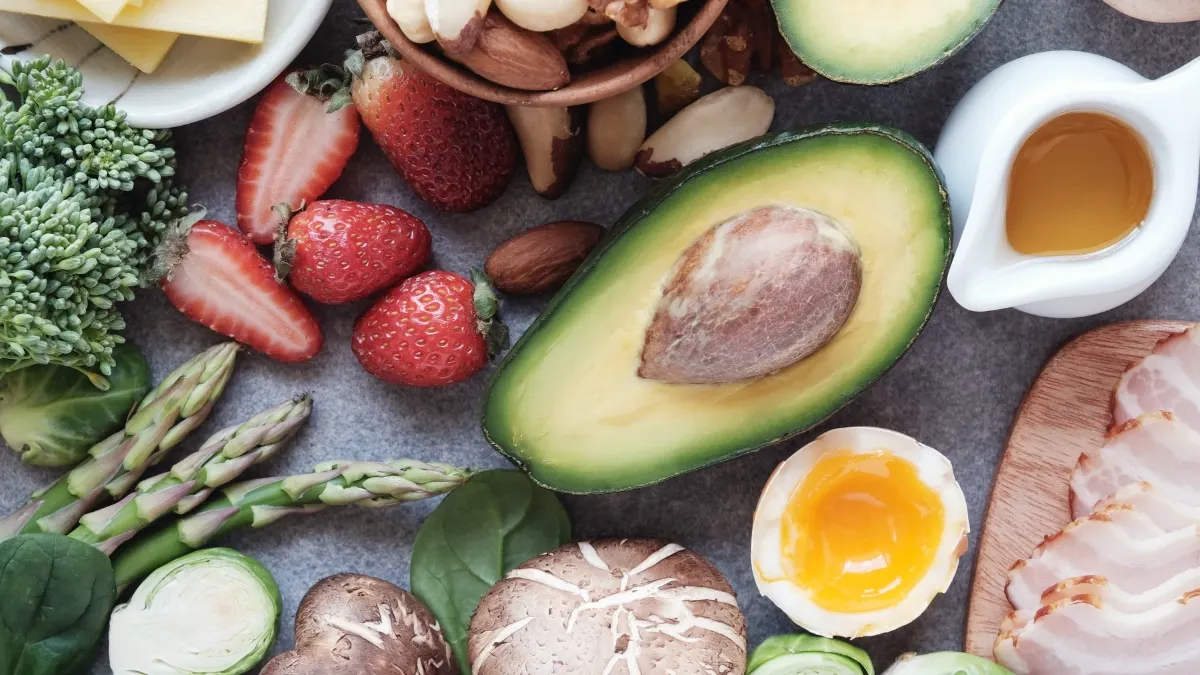That feeling you get in your 40s isn’t just in your head. Your energy fades, and recovery takes longer for a reason. Science shows our bodies hit a biological tipping point around age 44, a time of massive cellular change that opens the door to age-related problems.
But you are not a passive observer of this decline. A powerful, built-in cleaning process called autophagy can be switched back on. This guide will show you exactly how to reactivate this cellular renewal program to help you feel younger and more resilient from the inside out.
Why Your 40s Are a Cellular Turning Point
The “Cellular Reset” Your Body Needs After 40
The Cellular Slowdown
As you age, your cells’ natural “cleanup” process, known as autophagy, becomes less efficient.
This decline allows damaged components and metabolic “junk” to build up, which scientists link directly to:
- Slower metabolism & energy dips
- Increased inflammation
- Higher risk of age-related diseases
Your Body’s Recycling Program
Autophagy is a 3-step renewal process. Think of it as your cell’s smart cleaning crew:
The Payoff: Key Benefits
Re-activating this process is a key strategy for healthy aging. The benefits include:
- Supports cellular rejuvenation
- Promotes metabolic health & fat loss
- Enhances energy, focus, and vitality
- Helps control system-wide inflammation
- Strengthens your immune system
- Supports brain and heart health
When you hit your 40s, you start to feel a real change. Your body just doesn’t bounce back like it used to. Your energy is up and down, it takes longer to recover from a workout, and you might just feel less vibrant.
These aren’t just feelings; they are signs of a deep change happening inside your body’s cells. Science shows that we don’t just age slowly and steadily. Instead, our bodies go through big, fast changes at certain times in our lives.
New research from Stanford University shows the mid-40s is one of those key times. Around age 44, a huge number of molecules in your body change course. These aren’t small tweaks.
They are major shifts that affect your metabolism, heart health, skin, and muscles. This tells us that the 40s are a tipping point. Your cells are changing in a big way, which can make you more open to the health problems that come with getting older.
This leads to a big question: Can you do anything about it? Can you step in and help your cells get younger from the inside out? The answer from science is a clear yes. The secret is a process called autophagy. Think of it as your body’s built-in renewal program. It’s a smart cleaning system that slows down as you age.
But the good news is, you can turn it back on. This guide will show you what autophagy is, why you need to focus on it after 40, and give you seven proven ways to fire it up for a longer, healthier life.
The Longevity Blueprint: 7 Proven Ways to Activate Autophagy
One of the most exciting discoveries in aging research is that you can control autophagy. You can send strong signals to your cells to turn up their cleaning and recycling program.
Many of these methods work by using “hormesis”—the idea that a little bit of good stress can make your body stronger and more resilient. These stressors push your cells just enough to turn on their defense and repair systems, and autophagy is a big part of that.
1. Use Intermittent Fasting to Control When You Eat

Fasting is the most powerful way to turn on autophagy. When you stop eating for a while, your cells have to switch from using outside fuel to using what’s already inside. This is a strong signal for your body to start a deep clean, breaking down old parts for energy.
When you fast, your blood sugar and insulin levels drop. This, along with the low energy in your cells, flips the AMPK switch on and the mTOR switch off. This takes the brakes off autophagy. The benefits start after about 12 to 14 hours of fasting, but a stronger autophagy response seems to kick in after 18 to 24 hours. It gets even more powerful after 48 hours.
Here are a few popular ways to do it:
Time-Restricted Eating
This is the easiest for most people. You fast for a set number of hours each day and eat all your meals in a smaller “eating window.” The 16:8 method is common (fast for 16 hours, eat in an 8-hour window). You can start with a 12-hour fast and work your way up.
The 5:2 Diet
You eat normally for five days a week and cut your calories down to about 500-600 on two days that aren’t back-to-back.
Eat-Stop-Eat
This means doing a full 24-hour fast once or twice a week. For example, you could finish dinner at 7 p.m. on Monday and not eat again until 7 p.m. on Tuesday.
As longevity researcher Dr. Valter Longo says, you have to be smart about fasting. He notes that fasting “can be very good or very bad, depending on what you do, how long you do it for, who you are.”
2. Change Your Fuel with a Ketogenic Diet

The ketogenic (or keto) diet can trigger autophagy without you having to stop eating completely. It works by tricking your body into thinking it’s fasting. You do this by cutting way back on carbs (to 5-10% of your calories) and eating a lot more healthy fats (around 75%).
Without its usual sugar for fuel, your body starts burning fat and making molecules called ketones. This state is called ketosis.
This low-sugar, low-insulin state sends the same signals as fasting. It turns on AMPK and turns off mTOR, creating the right conditions for autophagy. Animal studies have shown that a keto diet can boost signs of autophagy in the brain, which could help protect it.
The key isn’t just what you eat, but getting your body into ketosis. You can check for ketones in your blood, breath, or urine to see if you’ve made the switch.
3. Use High-Intensity Exercise to Create Good Stress

Exercise is a great example of a good stress that fires up autophagy, especially in your muscles, liver, and fat tissue. An intense workout creates a short-term energy crisis in your cells. This signals the need for a quick cleanup to repair tiny muscle tears, clear out waste, and make more energy. Autophagy does all of this.
The main trigger during exercise is the high demand for energy, which activates the AMPK repair switch. This starts the cleanup and renewal process, which helps your muscles get stronger.
While all exercise is good, the intensity seems to be what really gets autophagy going. Studies show that High-Intensity Interval Training (HIIT) is better than steady, moderate exercise or just lifting weights for boosting autophagy and keeping your mitochondria healthy.
HIIT means short bursts of all-out effort with short rest periods in between. For example, you could run on a treadmill as fast as you can for 1 minute, then walk slowly for 1 minute, and repeat that 6 to 12 times.
The goal is to push yourself hard during the intense parts. While HIIT is great for autophagy, lifting weights is still vital for keeping your muscle mass as you age. So, the best plan is to do both.
4. Eat More Polyphenols (Special Plant Compounds)

Some natural compounds in plants, called polyphenols, can act like fasting in a pill. They can turn on some of the same longevity pathways, including autophagy, without you having to cut calories. They gently stress your cells, which makes them turn on their protective systems.
Here are a few of the best ones:
Resveratrol
Found in the skin of red grapes, blueberries, and raspberries. Resveratrol is great at turning on proteins called sirtuins, which are linked to a long life. Sirtuins then help activate autophagy.
Curcumin
This is the bright yellow compound in turmeric. Curcumin can trigger autophagy in a few ways, including by activating the AMPK repair switch and blocking the mTOR grow switch.
EGCG
This is the powerful compound in green tea. EGCG helps autophagy get started by boosting a key protein needed to form the cellular trash bags.
You can get these by eating the foods they come from. Enjoy dark berries, cook with turmeric (add a little black pepper to help your body absorb it), and drink green tea. You can also find them as supplements.
5. Make Your Coffee Work for You

Coffee is so powerful it deserves its own spot on the list. Studies show that drinking coffee quickly triggers autophagy in your liver, heart, and muscles. And here’s the key part: both regular and decaf coffee work.
This means the benefits come from the rich mix of compounds in coffee, especially its polyphenols, not just the caffeine.
The main polyphenol in coffee is chlorogenic acid, which has been shown to turn on autophagy directly. This makes coffee a simple and effective way to boost your cellular cleaning.
For the best results, drink 2-3 cups of black coffee a day. Adding sugar or milk can raise your insulin, which will turn off the autophagy signals.
6. Use Cold Exposure to Build Resilience

Putting your body in the cold on purpose is another form of good stress that can train your cells to be stronger and better at autophagy. The body’s reaction to cold is a powerful survival response that happens all the way down at the cellular level.
A study from the University of Ottawa showed how this works over time. The first time you get into cold water, it can be a shock to your cells and actually disrupt autophagy. But, when people did it for seven days in a row, their bodies adapted.
By the end of the week, their cells showed a big increase in protective autophagy and fewer signs of damage. This shows that you can train your cells to handle cold better.
You don’t have to jump into an ice bath to start. The key is to be consistent and start slow:
Contrast Showers
This is a great way to begin. At the end of your normal warm shower, turn the water to as cold as you can handle for 30 seconds. Try to work your way up to 2-3 minutes.
Shivering is a Good Sign
The signal that you’re challenging your body enough to trigger these deep changes is shivering. You don’t need to shiver every time, but feeling it now and then means the cold is strong enough to work.
Consistency is Better Than Intensity
A 2-minute cold shower every day is probably better for your cells in the long run than one extreme ice plunge a month.
7. Get Deep, Restorative Sleep

Sleep isn’t just rest; it’s when your brain does its most important maintenance. During deep sleep, your brain turns on a special cleaning system called the “glymphatic system.” It uses fluid to flush out waste and toxic proteins that build up while you’re awake. This nightly cleaning is closely tied to autophagy.
Your internal 24-hour body clock, or circadian rhythm, is a master controller of autophagy. Not getting enough sleep or having a messed-up sleep schedule throws this whole system off.
It makes it harder for your brain to clean itself, which lets toxic proteins build up. These are the same proteins linked to brain diseases. Bad sleep lets the trash pile up in your brain.
So, to boost autophagy in your brain, you need to focus on sleep quality, not just how many hours you get. Here are some tips:
Keep a Regular Schedule
Go to bed and wake up around the same time every day, even on weekends. This helps set your body clock.
Make Your Room a Cave
Your bedroom should be dark, quiet, and cool. This helps you get deep, uninterrupted sleep.
Manage Your Light
Get bright, natural light in the morning to wake up your body clock. At night, avoid blue light from screens for at least an hour before bed. This lets your body make the sleep hormone melatonin.
These seven methods are not just separate tricks. They all feed into the same core system that controls your cellular health. Because they are all connected, doing a few of them together will likely give you a much bigger boost in autophagy than just doing one.
For example, try eating in a smaller window, eating more colorful plants, doing some intense exercise, and getting good sleep.
Conclusion
Middle age is a major turning point for your body. The science is clear: around age 40, your cells go through big changes. At the same time, your body’s main cleaning system, autophagy, starts to slow down.
This mix of less cleaning and more damage creates the perfect setup for the chronic diseases we see with aging.
But the message from the science of autophagy is that you have power. You don’t have to just sit back and watch this happen. The research gives us a clear plan with seven powerful and simple tools.
By changing when you eat, how you exercise, the temperature of your shower, and how well you sleep, you can turn this vital longevity system back on.


